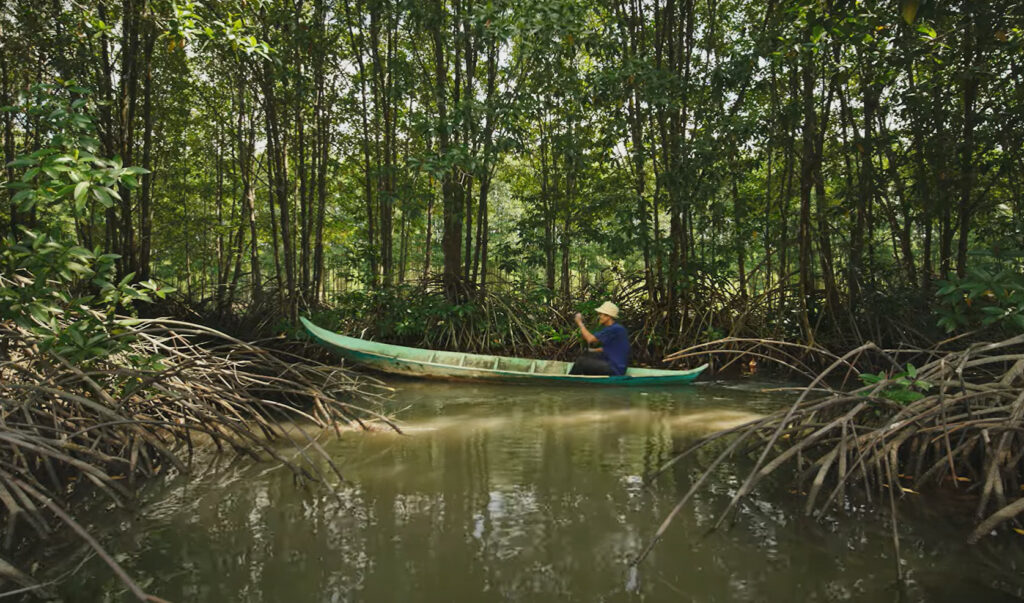GAA Films: How One Indonesian Shrimp Farming Family is Planning for the Future
GAA Films’ fifth documentary short film, which makes its debut at the end of November, tells the story of Rosida Idriss and her daughter, Aanisah Idriss, and their network of black tiger shrimp farms in East Kalimantan, Indonesia. The story is peppered with plotlines that a lot of family-run seafood businesses can attest to — being a good neighbor, being a steward of the environment, taking care of your product, communicating and marketing effectively, succession planning.
Established in 2016, GAA has been using film as a platform to talk about responsible aquaculture through the eyes of the people who farm seafood for a living, in a manner that the average person can relate to. GAA Films has been accepted into 12 international film festivals, winning three awards in the environmental category.
What makes the fifth film so interesting is the overlaying plotlines and the tension that didn’t exist in the four other films, according to Becky Holt, who produces GAA Films. In anticipation of the fifth film (a 26-second clip of the film was just released), Holt answered a few questions about what sets the fifth film apart as well as how industry stakeholders can benefit from sharing these films.
GAA: What is the new film about?
Holt: The film takes place in East Kalimantan, on the east side of Borneo, which is well known for its beautiful, pristine jungles. A lot of shrimp farming takes place along the Mahakam Delta, in Borneo. It’s no secret that there’s negative media surrounding shrimp farming, especially the way it used to be done, and we know that there’s been a certain amount of environmental degradation that went on, but we found an example of a shift taking place in this type of farming through the story of one woman, Rosida Idriss, and her daughter, Aanisah. They’re running a network of black tiger shrimp farms in East Kalimantan. It’s a really interesting story because Annisah grew up going to the shrimp farm with her mother, but she sees the farm with sort of a contemporary lense by the social media content she’s publishing around what her mom is trying to do in the area. They’re rehabilitating mangroves. They’re doing a lot of community work, giving jobs to local farmers. They’re also supporting a local orangutan sanctuary. So as far as a storyline, I find the family story really interesting, but the work that they’re doing with the Borneo Orangutan Sanctuary is helping to change the perception of shrimp farming. It’s a key underlying narrative that we found.
How does the network of black tiger shrimp farms work?
What Rosida has set up is essentially an association. It’s a group farmers working together to adopt the same best practices and rehabilitate the mangrove forests. She definitely understands that the practices at the farm next to her is eventually going to affect her farm, so she’s keen on collaborating with the community. When we were there, we didn’t hear about any bad players in their area, so they’re able to state that assurance when marketing their shrimp.
What sets the fifth film apart from the other four films?
We’re transitioning GAA Films into a longer duration format and re-thinking the style of our documentaries. It’s more candid, and this is our first test at doing that. Also, we want to tell a really honest story that’s investigative and allows for some controversy, and you can really only do that with a longer format.
What makes GAA Films appealing to the average person?
Part of the reason I feel like these are digestible is because we’re focused on showing people beautiful places in the world performing jobs that we don’t normally have a glimpse into. In our industry, people have a lot of respect for place and environment. These areas are remote, beautiful and simple — that’s really inticing to most of us trapped behind a desk all day. Not to be morbid! Most people don’t know what aquaculture looks like. We’re putting a face to aquaculture place-wise as well as humanizing it.
How can industry stakeholders, especial retailers and foodservice operators, benefit from sharing these films?
We allow our members to take these documentary short films and pair them with a campaign that’s geared toward educating consumers about aquaculture. They can be a supplement marketing efforts that you’re already performing. These films work because they are very objective pieces and are not promotions for any one company.




